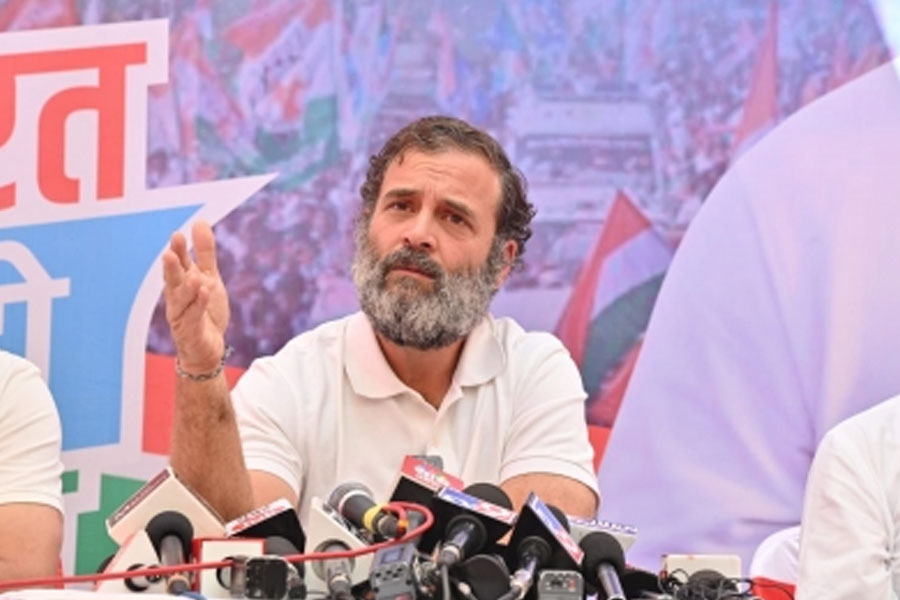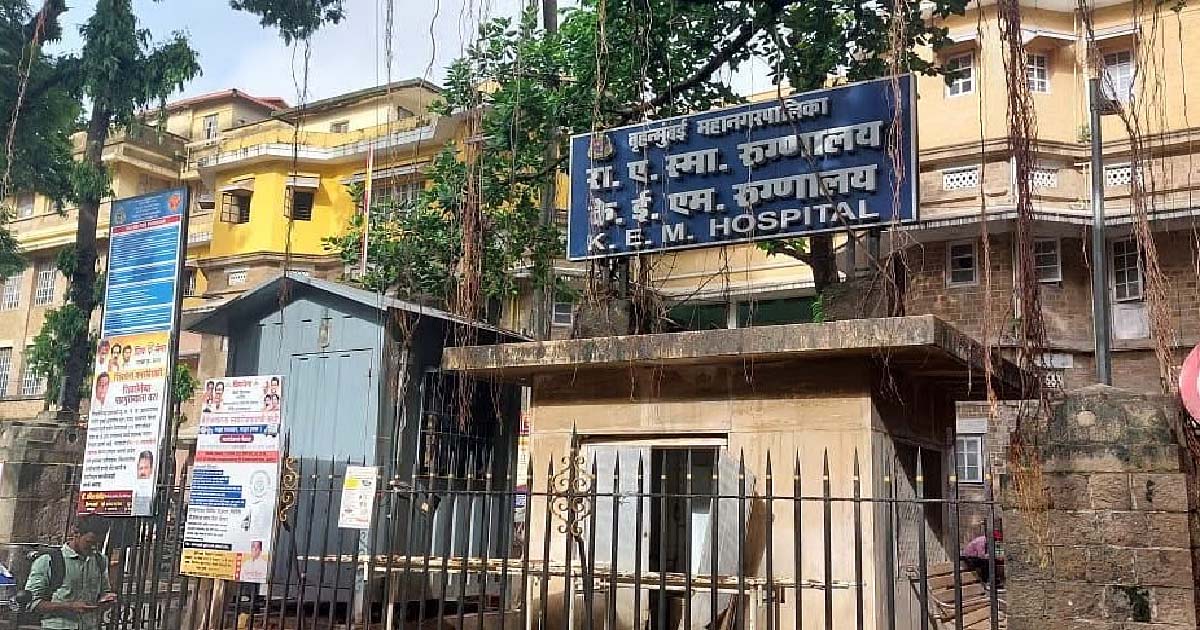National News
Rahul Gandhi dares govt to stop Bharat Jodo Yatra

Congress MP Rahul Gandhi on Thursday challenged the government to stop the ongoing Bharat Jodo Yatra (BJY) “which is conveying the message of love – not hatred – among the people of India”.
Referring to certain Balasahebanchi Shiv Sena (BSS) leaders questioning the need for the BJY, he said that it is intended to “connect” the country, “hear” the voices of the masses, and spread the message of love through the march.
“If the government still feels they want to stop it, then let them do it… No problems. I have decided to continue it from Kanyakumari to Kashmir and hoist the tricolour in Srinagar,” declared Gandhi, in a media interaction here this afternoon.
Touching upon the statements by certain Bharatiya Janata Party leaders that “when the country is not divided then where’s the need to unite it” through the BJY, Gandhi said that the country’s atmosphere has completely changed in the past 8 years, with hatred seen all around.
He said that the BJY is countering the ideology of those who spread “hate” with the idea of “love” by those who work to unite the country as hatred makes the nation weak while love strengthens it.
“Lakhs of people are joining the BJY… Farmers, workers, youth, shopkeepers, women, speak of their issues, problems, pains and suffering during the march, I am learning a lota We are getting a tremendous response and we are being showered with love,” said Gandhi.
Referring to V.D. Savarkar issue, Gandhi waved and read out a letter written by the revolutionary to the British government, saying he (Savarkar) wanted to be a servant of the colonial rulers.
“What wrong have I said? I have only presented the historical truth. Mahatma Gandhi, Pandit Jawaharlal Nehru, Sardar Vallabhbhai Patil and others were also jailed by the British for years but they did not secure their release by writing (such) letters to the colonial rulers,” Gandhi pointed out.
During the BJY, he said he was “listening to the voice of the farmers, workers, youth and women” of the country, which “the government of India is not hearing” and how the voice of the opposition is also being suppressed.
“Whenever we, the Congress and other Opposition parties attempt to raise the concerns of the masses like demonetisation, economy, GST inflation, China, in the parliament, the mikes are switched off, there is pressure on the institutions and the judicial system from the ruling party,” Gandhi said.
Through the BJY, he is highlighting all these questions, and learning how the people are living under the shadow of fear, hatred and violence, he said.
Dwelling upon the major problems of the people that he encountered during the BJY, Gandhi said these pertain to the farmers and the youth of the country, who feel “they have no future”, but he was questioning and demanding answers from the government.
“Farmers are in distress, they don’t get the due price for their produce, no compensation, loan waivers or insurance claims for crop losses. When the (former) UPA government was in power, we gave the farmers all help they needed. The youth of the country are worried as there’s no guarantee of jobs even after getting the necessary qualifications and skills, spending money taken on education loans,” Gandhi said.
He said that if the farmland suicides have to be stopped, then they need proper support and timely help, they are the people who feed the nation and it’s the responsibility of the government to stand behind them, just as the UPA government had done in the past.
“The youth are facing a similar scenario. Young boys and girls say they are acquiring education, but not one youth I met was confident that he/she will get employment. Their parents work hard, borrow from various sources and mostly spend it on private colleges for education, inflation is high, and the future is bleak with no jobs for their children. The government is not paying attention to all this,” said Gandhi.
Slamming the BJP, Gandhi said that all out attempts are being made to end the Opposition parties in the country with the lure of money power, citing the Maharashtra example.
He mentioned how a Shiv Sena-UBT MLA informed of a Rs 50 crore offer to join the rebel group but he refused, and the erstwhile Maha Vikas Aghadi government in the state collapsed in June.
“The Shiv Sena-UBT MLAs were given Rs 50 crore and taken away by the rival camp. Corrupt people are going there and efforts are on to decimate the Opposition parties. But there’s no dearth of good and honest people in the country,” declared Gandhi.
The Congress MP field questions in Marathi, Hindi and English and was flanked by top party leaders like K.C. Venugopal, Jairam Ramesh, H.K. Patil, Ashish Dua, and state leaders including Nana Patole, Balasaheb Thorat, Atul Londhe, Dr. Raju Waghmare, Kapil Dhoke, Dr. Sudhir Dhone and others.
National News
Mumbai: BMC-Run KEM Hospital Commissions Ultra-Modern Modular OTs For Heart Transplants And Complex Surgeries

Mumbai, Dec 26: Mumbai’s BMC-run KEM Hospital has strengthened its advanced healthcare infrastructure with the commissioning of ultra-modern steel modular operation theatres (OTs) designed for heart transplants and other complex surgeries. Following the completion of sterilisation protocols, cardiac surgeries have already commenced in the new facility.
The newly installed modular OTs feature steel walls, ceilings, frames and panels, making them resistant to dust, moisture and water. This design significantly improves cleanliness and simplifies sterilisation, thereby reducing the risk of post-operative infections.
“Equipped with laminar airflow systems and HEPA filters, the operation theatres ensure a continuous supply of clean, controlled air by filtering out bacteria, viruses, dust particles and other airborne contaminants,” said hospital officials, adding that the advanced setup will support not only heart transplants but also other organ transplants, surgeries for congenital disorders and complex paediatric procedures.
To further enhance efficiency, especially in emergency organ transplant cases, the hospital has developed special internal connectivity and separate entry points. These allow donor organs to be transported directly to the designated operation theatre, minimising time delays and reducing associated risks.
With this upgrade, KEM Hospital is expected to play a more significant role in organ transplantation and advanced surgical care in Mumbai and across Maharashtra.
Business
Keralites gulped liquor worth over Rs 332 crore during Christmas

Thiruvananthapuram, Dec 26: The Kerala State Beverages Corporation (BEVCO) recorded a sharp surge in liquor sales during the Christmas week, with revenues touching a record Rs 332.62 crore, according to official figures.
The Christmas week sales are calculated for the four days from December 22 to December 25, and officials said this year witnessed a significant jump compared to previous years.
Data shows a 19 per cent increase in sales over the corresponding period last year, underlining a strong festive demand.
The sharpest spike was recorded on Christmas Eve, when liquor sales alone amounted to Rs 114.45 crore.
In comparison, sales on the same day last year stood at Rs 98.98 crore, indicating a substantial year-on-year rise.
Officials attributed the surge not only to the festive season but also to improved consumer facilities introduced by BEVCO over the past year.
The corporation had expanded its premium retail infrastructure, including the launch of new premium counters aimed at offering a better purchasing experience and a wider selection of high-end products.
Premium outlets were recently opened in key centres such as Thrissur and Kozhikode, and officials said these had a positive impact on overall sales figures.
The enhanced facilities helped reduce crowding at regular outlets and encouraged higher-value purchases, contributing to the increase in revenue.
The Corporation has traditionally seen a spike in sales during festival periods such as Onam and Christmas, but this year’s figures mark one of the highest Christmas week turnovers recorded by the state-run corporation.
The rise in liquor sales is expected to provide a significant boost to the State exchequer, as the corporation is a major contributor to Kerala’s revenue through taxes and duties.
Liquor is sold through state-run 325 retail outlets.
Studies have shown that around 10 per cent of the 3.30 crore Kerala population are tipplers, including around three lakh women.
In 2024–25, Kerala’s liquor sales rose to Rs 19,730.66 crore, up from Rs 19,069.27 crore in 2023–24, marking an annual growth of 3.5 per cent.
Business
Govt drive returns Rs 2,000 crore unclaimed savings to rightful owners

New Delhi, Dec 26: The government has succeeded in returning to the rightful owners a total amount of nearly Rs 2,000 crore that was stuck as “unclaimed savings” across banks, insurance, mutual funds, dividends, shares, and retirement benefits held within the regulated financial system, according to an official statement issued on Friday.
The funds have been restored through the Centre’s “Your Money, Your Right” nationwide awareness and facilitation initiative, launched in October 2025 to help citizens identify and reclaim unclaimed financial assets. The initiative is being coordinated by the Finance Ministry’s Department of Financial Services, with financial sector regulators reaching across digital portals with district-level facilitation.
Across generations, Indian families have saved carefully through opening bank accounts, purchasing insurance policies, investing in mutual funds, earning dividends from shares, and setting aside money for retirement. These financial decisions are taken with a hope and responsibility, often to secure children’s education, support healthcare needs, and ensure dignity in old age.
Yet, over time, a significant portion of these hard-earned savings has remained unclaimed. The money has not vanished, nor has it been misused. It lies safely with regulated financial institutions, separated from its rightful owners due to a lack of awareness, outdated records, changes in residence, or missing documentation. In many cases, families are simply unaware that such assets exist.
The volume of unclaimed financial assets in India is significant and spans multiple segments of the formal financial system. Indicative estimates suggest that Indian banks together hold around Rs 78,000 crore in unclaimed deposits. Unclaimed insurance policy proceeds are estimated at nearly Rs 14,000 crore, while unclaimed amounts in mutual funds are about Rs 3,000 crore. In addition, unclaimed dividends account for around Rs 9,000 crore, according to official figures.
Together, these amounts underline the scale of unclaimed savings belonging to citizens that continue to remain unused, despite being securely held within the financial system.
Your Money, Your Right is a nationwide effort to reconnect citizens with these forgotten financial assets and ensure that money that belongs to individuals and families ultimately finds its way back to them.
These unclaimed financial assets arise when money held with financial institutions is not claimed by the account holder or their legal heirs for a prolonged period. Such assets include:
*Bank deposits such as savings accounts, current accounts, fixed deposits, and recurring deposits that have not been operated for ten years or more.
*Insurance policy proceeds that remain unpaid beyond the due date
*Mutual fund redemption proceeds or dividends that could not be credited due to reasons such as a change in bank account, bank account closure, incomplete bank account in records, etc.
*Dividends and shares that remain unclaimed and are transferred to statutory authorities
*Pension and retirement benefits that are not claimed within the normal course
In most cases, assets may become unclaimed because of routine life events such as migration for work, changes in contact details, closure of old bank accounts, or lack of information among family members and legal heirs.
The Government is coordinating with the Reserve Bank of India (RBI), the Insurance Regulatory and Development Authority of India (IRDAI), the Securities and Exchange Board of India (SEBI), the Investor Education and Protection Fund Authority (IEPFA), and the Pension Fund Regulatory and Development Authority (PFRDA) to help citizens identify, access and reclaim financial assets that legally belong to them, using simple processes and transparent systems.
-

 Crime3 years ago
Crime3 years agoClass 10 student jumps to death in Jaipur
-

 Maharashtra1 year ago
Maharashtra1 year agoMumbai Local Train Update: Central Railway’s New Timetable Comes Into Effect; Check Full List Of Revised Timings & Stations
-

 Maharashtra1 year ago
Maharashtra1 year agoMumbai To Go Toll-Free Tonight! Maharashtra Govt Announces Complete Toll Waiver For Light Motor Vehicles At All 5 Entry Points Of City
-

 Maharashtra1 year ago
Maharashtra1 year agoFalse photo of Imtiaz Jaleel’s rally, exposing the fooling conspiracy
-

 National News1 year ago
National News1 year agoMinistry of Railways rolls out Special Drive 4.0 with focus on digitisation, cleanliness, inclusiveness and grievance redressal
-

 Maharashtra1 year ago
Maharashtra1 year agoMaharashtra Elections 2024: Mumbai Metro & BEST Services Extended Till Midnight On Voting Day
-

 National News1 year ago
National News1 year agoJ&K: 4 Jawans Killed, 28 Injured After Bus Carrying BSF Personnel For Poll Duty Falls Into Gorge In Budgam; Terrifying Visuals Surface
-

 Crime1 year ago
Crime1 year agoBaba Siddique Murder: Mumbai Police Unable To Get Lawrence Bishnoi Custody Due To Home Ministry Order, Says Report












